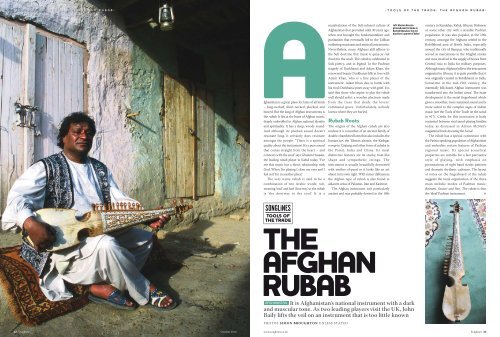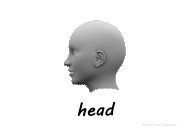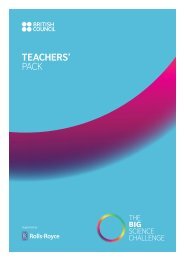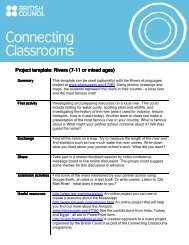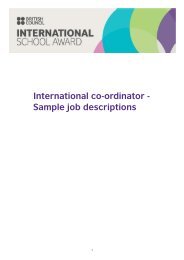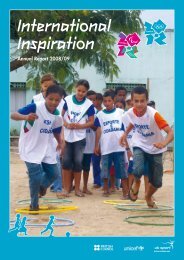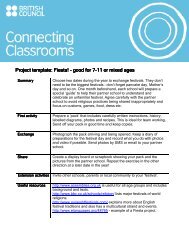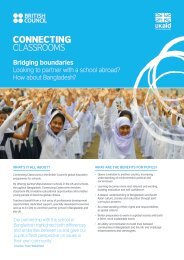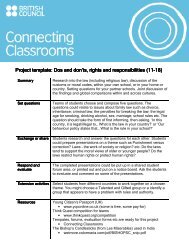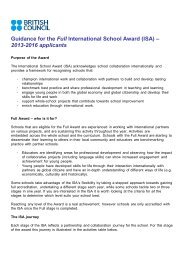AFGHANISTAN It is Afghanistan's national instrument with a dark ...
AFGHANISTAN It is Afghanistan's national instrument with a dark ...
AFGHANISTAN It is Afghanistan's national instrument with a dark ...
You also want an ePaper? Increase the reach of your titles
YUMPU automatically turns print PDFs into web optimized ePapers that Google loves.
° T O O L S O F T H E T R A D E : T H E A F g H A n R U B A B °<br />
42 Songlines October 2010<br />
fghan<strong>is</strong>tan <strong>is</strong> a great place for lutes of all kinds<br />
– long-necked, short-necked, plucked, and<br />
bowed. But the king of Afghan <strong>instrument</strong>s <strong>is</strong><br />
the rubab. <strong>It</strong> lies at the heart of Afghan music,<br />
deeply embedded in Afghan <strong>national</strong> identity<br />
and spirituality. <strong>It</strong> has a deep, woody sound.<br />
And although its plucked sound doesn’t<br />
resonate long, it certainly does resonate<br />
amongst the people. “There <strong>is</strong> a spiritual<br />
quality about the <strong>instrument</strong>. <strong>It</strong>’s a pure sound<br />
that comes straight from the heart – and<br />
connects <strong>with</strong> the soul,” says Ghulam Hussain,<br />
the leading rubab player in Kabul today. “For<br />
me th<strong>is</strong> music has a direct relationship <strong>with</strong><br />
God. When I’m playing I close my eyes and I<br />
feel as if I’m in another place.”<br />
The very name rubab <strong>is</strong> said to be a<br />
combination of two Arabic words: ruh,<br />
meaning ‘soul’ and bab ‘doorway,’ so the rubab<br />
<strong>is</strong> ‘the doorway to the soul.’ <strong>It</strong> <strong>is</strong> a<br />
Tools oF<br />
The TRAde<br />
The<br />
AFGhAN<br />
RUBAB<br />
<strong>AFGHANISTAN</strong> <strong>It</strong> <strong>is</strong> Afghan<strong>is</strong>tan’s <strong>national</strong> <strong>instrument</strong> <strong>with</strong> a <strong>dark</strong><br />
and muscular tone. As two leading players v<strong>is</strong>it the UK, John<br />
Baily lifts the veil on an <strong>instrument</strong> that <strong>is</strong> too little known<br />
PHOTOS SI MON BROUGHTON U N L ESS STAT ED<br />
manifestation of the Sufi-infused culture of<br />
Afghan<strong>is</strong>tan that prevailed until 30 years ago,<br />
when war brought the fundamental<strong>is</strong>m and<br />
puritan<strong>is</strong>m that eventually led to the Taliban<br />
outlawing musicians and musical <strong>instrument</strong>s.<br />
Nevertheless, many Afghans still adhere to<br />
the Sufi doctrine that music <strong>is</strong> qaza-ye ruh<br />
(food for the soul). The rubab <strong>is</strong> celebrated in<br />
Sufi poetry, and in legend. In the Pashtun<br />
tragedy of Durkhanai and Adam Khan, the<br />
renowned beauty Durkhanai falls in love <strong>with</strong><br />
Adam Khan, who <strong>is</strong> a fine player of the<br />
<strong>instrument</strong>. Adam Khan dies in battle <strong>with</strong><br />
h<strong>is</strong> rival; Durkhanai pines away <strong>with</strong> grief. <strong>It</strong> <strong>is</strong><br />
said that those who aspire to play the rubab<br />
well should select a wooden plectrum made<br />
from the trees that shade the lovers’<br />
communal grave. Unfortunately, nobody<br />
knows where they are buried.<br />
Rubab Roots<br />
The origins of the Afghan rubab are also<br />
unclear. <strong>It</strong> <strong>is</strong> a member of an ancient family of<br />
double-chambered lutes that also includes the<br />
Iranian tar, the Tibetan danyen, the Kashgar<br />
rewap in Xinjiang and other form of rubabs in<br />
the Pamir, India and China. <strong>It</strong>s most<br />
d<strong>is</strong>tinctive features are its stocky, boat-like<br />
shape and sympathetic strings. The<br />
<strong>instrument</strong> <strong>is</strong> usually beautifully decorated<br />
<strong>with</strong> mother-of-pearl so it looks like an art<br />
object in its own right. With minor differences<br />
the Afghan type of rubab <strong>is</strong> also found in<br />
adjacent areas of Pak<strong>is</strong>tan, Iran and Kashmir.<br />
The Afghan <strong>instrument</strong> <strong>is</strong>n’t particularly<br />
ancient and was probably dev<strong>is</strong>ed in the 18th<br />
° T O O L S O F T H E T R A D E : T H E A F g H A n R U B A B °<br />
Left: Ghulam Hussain<br />
pictured near h<strong>is</strong> home in<br />
Kucheh Kharabat, the old<br />
musicians’ quarter of Kabul<br />
century in Kandahar, Kabul, Ghazni, Peshawar<br />
or some other city <strong>with</strong> a sizeable Pashtun<br />
population. <strong>It</strong> was also popular, in the 19th<br />
century, amongst the Afghans settled in the<br />
Rohilkhand area of North India, especially<br />
around the city of Rampur, who traditionally<br />
served as mercenaries in the Mughal armies<br />
and were involved in the supply of horses from<br />
Central Asia to India for military purposes.<br />
Although many Afghans believe the <strong>instrument</strong><br />
originated in Ghazni, it <strong>is</strong> quite possible that it<br />
was originally created in Rohilkhand, in India.<br />
Sometime in the mid-19th century, the<br />
essentially folk-based Afghan <strong>instrument</strong> was<br />
transformed into the Indian sarod. The main<br />
development <strong>is</strong> the metal fingerboard which<br />
gives a smoother, more sustained sound and <strong>is</strong><br />
more suited to the complex ragas of Indian<br />
music (see the Tools of the Trade on the sarod<br />
in #17). Credit for th<strong>is</strong> innovation <strong>is</strong> hotly<br />
contested between rival sarod-playing families<br />
today, as d<strong>is</strong>cussed in Adrian McNeil’s<br />
mag<strong>is</strong>terial book Inventing the Sarod.<br />
The rubab has a special connection <strong>with</strong><br />
the Pashto speaking population of Afghan<strong>is</strong>tan<br />
and embodies certain features of Pashtun<br />
regional music. <strong>It</strong>s special acoustical<br />
properties are suitable for a fast percussive<br />
style of playing, <strong>with</strong> emphas<strong>is</strong> on<br />
permutations of right hand stroke patterns<br />
and dramatic rhythmic cadences. The layout<br />
of notes on the fingerboard of the rubab<br />
suggests the tonal organ<strong>is</strong>ation of the three<br />
main melodic modes of Pashtun music:<br />
Bairami, Kesturi and Pari. The rubab <strong>is</strong> thus<br />
the ‘ideal’ Pashtun <strong>instrument</strong>. »<br />
www.songlines.co.uk Songlines 43
IllustratIoN: BaIly/MIoNet<br />
° T O O L S O F T H E T R A D E : T H E A F g H A n R U B A B °<br />
The Rubab<br />
Nut<br />
skin belly<br />
Four frets<br />
Pegs for<br />
sympathetic strings<br />
two or three<br />
drone strings<br />
three main<br />
strings<br />
Bridge<br />
strings<br />
holders<br />
Top: Rubab players for hire in<br />
Peshawar, Pak<strong>is</strong>tan<br />
Above: Jawed Qaderi from<br />
the renowned Qaderi family<br />
of rubab makers in Kabul<br />
Left, top to bottom: the neck<br />
and frets; mother-of-pearl<br />
decoration – note the<br />
songbirds; the skin-covered<br />
belly where the strings are<br />
plucked; the decorated body<br />
of Ghulam Hussain’s favourite<br />
<strong>instrument</strong> made by Azim<br />
Qaderi<br />
Rubab Repertoire<br />
Alongside a rich repertoire of folk music, the<br />
rubab <strong>is</strong> also widely used for playing the art<br />
music of Kabul, where it <strong>is</strong> the principal<br />
<strong>instrument</strong> accompanying ghazal singing, as<br />
we can hear in the work of great singers like<br />
Rahim Bakhsh, Hamahang and Amir<br />
Mohammad. As a poetic form, the Kabuli<br />
ghazal (usually in Persian, but sometimes in<br />
Pashto) cons<strong>is</strong>ts of a variable number of<br />
couplets, <strong>with</strong> the same rhyme scheme running<br />
through the whole poem. In performance,<br />
double-tempo accelerating <strong>instrument</strong>al<br />
sections on the rubab are interpolated between<br />
the texts sung at a slow tempo so a ghazal has<br />
the character of a dialogue between the singer<br />
and the rubab player. The texts of ghazals are<br />
very often of a Sufi spiritual nature, by poets<br />
such as Hafez, Bedil and others.<br />
In addition to th<strong>is</strong> role, the Afghan rubab <strong>is</strong><br />
also used for playing two types of <strong>instrument</strong>al<br />
music. One <strong>is</strong> the naghma-ye chahartuk (four<br />
part <strong>instrument</strong>al piece), often used as a group<br />
<strong>instrument</strong>al at the start of a concert, intended<br />
to warm up the <strong>instrument</strong>s, the musicians,<br />
and the audience. Th<strong>is</strong> allows the rubab player<br />
to exploit the rhythmic possibilities of the high<br />
drone string in what might be described as<br />
‘Afghan minimal<strong>is</strong>m.’ The other genre <strong>is</strong> the<br />
naghma-ye klasik (the classical <strong>instrument</strong>al<br />
piece), the Afghan equivalent of Indian alap<br />
and gat, which allows ample scope for melodic<br />
improv<strong>is</strong>ation. The art of playing classical<br />
music on the rubab was pioneered by Ghulam<br />
Jailani and Mohammad Omar and <strong>is</strong> these<br />
days pursued by Homayun Sakhi and Khaled<br />
Arman of the Ensemble Kaboul. Arman has<br />
added more frets to make it easier to play high<br />
up, making it more like h<strong>is</strong> first <strong>instrument</strong>, the<br />
Span<strong>is</strong>h guitar.<br />
Mulberry – With<br />
strings Attached<br />
The rubab has three main playing strings<br />
(tuned in 4ths), four frets (giving 12 semitones<br />
to the octave), two or three long drone strings,<br />
and up to 15 sympathetic strings. <strong>It</strong> <strong>is</strong> the<br />
sympathetic strings that give the rubab its<br />
special sound. They are tuned to the notes of<br />
the raga being played, and reinforce the sound<br />
of each note as it <strong>is</strong> played. They produce a<br />
wash of sound, <strong>with</strong> complex interactions<br />
<strong>with</strong> the harmonics of each string. <strong>It</strong>’s like<br />
having an echo chamber built into the<br />
<strong>instrument</strong>. Some rubabs have empty<br />
eggshells glued inside like tiny cups that<br />
amplify the sound. The shortest sympathetic<br />
string <strong>is</strong> ra<strong>is</strong>ed by a protuberance on the<br />
bridge so it can be easily struck in <strong>is</strong>olation<br />
and used as a high drone in the complex<br />
rhythmic patterns that are the hallmark of the<br />
virtuoso player.<br />
The favourite wood for the body of the<br />
rubab <strong>is</strong> mulberry – and in particular the<br />
variety called shah tut (king mulberry). The<br />
lower chamber has a skin belly, while the upper<br />
has a wooden lid that serves as the fingerboard.<br />
Th<strong>is</strong> <strong>is</strong> usually highly decorated <strong>with</strong> intricate<br />
mother-of-pearl inlays, laid out in the form of a<br />
tree of life, <strong>with</strong> leaves, flowers, and songbirds<br />
such as nightingales or canaries. Afghans have<br />
a great love of birdsong, especially when<br />
combined <strong>with</strong> the sound of music and<br />
understand that such birds are attracted by the<br />
sound of music and are stimulated to sing in<br />
response to it. The frets are of nylon line tied<br />
around the neck. Their positions are not<br />
changed according to the raga being played.<br />
Some rubab players in Herat, notably Rahim<br />
Khushnawaz, have tied two extra frets to their<br />
rubabs to allow the <strong>instrument</strong> to play the<br />
neutral seconds of Iranian music.<br />
44 Songlines October 2010<br />
PasCal laFay<br />
sIMoN BrouGHtoN<br />
KHaleD arMaN ColleCtIoN<br />
The rubab <strong>is</strong> played <strong>with</strong> a wooden, bone, or<br />
horn plectrum (shahbaz) and requires a special<br />
posture for the right hand, <strong>with</strong> the wr<strong>is</strong>t<br />
sharply flexed. With the weight of the hand<br />
behind it, the downstroke has a more powerful<br />
sound than the upstroke, especially when the<br />
hand also impacts on the skin belly, adding a<br />
certain percussive element. The different<br />
permutations of down and upstrokes produce<br />
subtly different rhythmic patterns. As for the<br />
left hand, most rubab players tend to use just<br />
the first and third fingers to stop the strings. <strong>It</strong><br />
<strong>is</strong> easy to play <strong>with</strong>in the limited fretted range<br />
(an octave plus a wholetone), but advanced<br />
players ascend above th<strong>is</strong> which requires great<br />
skill and lots of practice to keep in tune.<br />
Rubab Maestros<br />
Ghulam Hussain <strong>is</strong> a master of both ghazal<br />
accompaniment and solo playing. H<strong>is</strong> father,<br />
Habibullah, played for many years <strong>with</strong> ghazal<br />
singer Rahim Bakhsh, and I had the<br />
Top to bottom: Ensemble<br />
Kaboul featuring singer<br />
Mahwash and rubab player<br />
Khaled Arman; Ghulam<br />
Hussain performing <strong>with</strong> h<strong>is</strong><br />
ensemble in Ryad Moqri at<br />
th<strong>is</strong> year’s Fes Festival; the<br />
first Radio Orchestra <strong>with</strong><br />
rubab player Mohammad<br />
Omar at the back, 1943<br />
Far right: Homayun Sakhi,<br />
who plays the Barbican in<br />
September<br />
d<strong>is</strong>cography<br />
° T O O L S O F T H E T R A D E : T H E A F g H A n R U B A B °<br />
Various Art<strong>is</strong>ts, Rough<br />
Guide to the Music of<br />
Afghan<strong>is</strong>tan (World<br />
Music Network, 2010)<br />
alongside rubab<br />
recordings from Ghulam Hussain (h<strong>is</strong> only<br />
commercially available recording), rahim<br />
Khushnawaz and Homayun sakhi, th<strong>is</strong> includes<br />
popular and folk music from afghan musicians<br />
inside and outside the country. reviewed on p83.<br />
Songlines Digital subscribers can<br />
download a track from th<strong>is</strong> album.<br />
See p58 for details<br />
Mohammad Omar,<br />
Virtuoso from<br />
Afghan<strong>is</strong>tan<br />
(Smithsonian<br />
Folkways, 2002)<br />
the celebrated 1975 concert in seattle, <strong>with</strong> Zakir<br />
Hussain on tabla. Contains three of Mohammad<br />
omar’s most important classical compositions.<br />
Rahim Khushnawaz,<br />
The Rubab of Heart<br />
(VDE-Gallo, 1993)<br />
Herat’s outstanding rubab<br />
maestro, in recordings<br />
made by John Baily in 1974. these include the<br />
classical <strong>instrument</strong>al music of Kabul and local<br />
Herat folk melodies. rather charmingly, some<br />
tracks have canaries singing in the background.<br />
Homayun Sakhi, The<br />
Art of the Afghan<br />
Rubab (Smithsonian<br />
Folkways, 2005)<br />
an outstanding younger<br />
player of the rubab nowadays based in Fremont,<br />
near san Franc<strong>is</strong>co. He has extended the use of the<br />
high drone to new heights of virtuosity. a top of<br />
the World review in #37.<br />
Khaled Arman, Rubab<br />
Raga (Arion, 2003)<br />
Based in Geneva, Khaled<br />
arman (also leader of<br />
ensemble Kaboul) has<br />
made various innovations to the rubab, such as<br />
adding frets to aid the playing of more classical<br />
repertoire. reviewed in #20.<br />
Daud Khan, Tribute to<br />
Afghan<strong>is</strong>tan<br />
(Felmay, 2004)<br />
Daud Khan plays both<br />
rubab and, as a student<br />
of amjad ali Khan, the sarod. th<strong>is</strong> CD contains a<br />
selection of classical and folk pieces.<br />
reviewed in #24.<br />
opportunity to hear and record them perform<br />
together several times in the 70s at Ramadan<br />
concerts. Ghulam Hussain grew up in a<br />
hereditary musical family in the Kucheh<br />
Kharabat, Kabul’s musicians’ quarter. He<br />
learned initially from h<strong>is</strong> father and uncle, but<br />
in due course became the student of<br />
Mohammad Omar (1905-1980), the doyen of<br />
rubab players in the 20th century and the<br />
originator of the styl<strong>is</strong>tic school named after<br />
him. “Ustad Mohammad Omar was the<br />
person who inspired me most,” says Ghulam<br />
Hussain. He was a prolific composer of<br />
classical compositions, and light <strong>instrument</strong>al<br />
pieces for the small radio orchestra that he<br />
directed. He <strong>is</strong> credited <strong>with</strong> inventing the<br />
high drone technique that <strong>is</strong> the hallmark of<br />
h<strong>is</strong> style. Most rubab players today<br />
acknowledge him as the greatest master of the<br />
<strong>instrument</strong> in living memory.<br />
In 1973 I myself started playing the rubab<br />
under Mohammad Omar’s tutelage, going<br />
regularly to h<strong>is</strong> house for lessons. While I gave<br />
him cash for my lessons, Ghulam Hussain, as<br />
Mohammad Omar’s official student, paid for<br />
h<strong>is</strong> tuition through service, and he used to<br />
serve up the tea during my lessons. In 2003 he<br />
was appointed as one of four teachers in the<br />
newly created music school of the Aga Khan<br />
Music Initiative for Central Asia, establ<strong>is</strong>hed<br />
to revital<strong>is</strong>e the vocal and <strong>instrument</strong>al skills<br />
needed to perform Kabuli art music. Seven<br />
years on he <strong>is</strong> still there, teaching, making<br />
periodic concert tours to the West, and doing<br />
h<strong>is</strong> best to generate interest in th<strong>is</strong> wonderful<br />
<strong>instrument</strong>. As he says, “I am happy to play<br />
rubab and I want to develop the <strong>instrument</strong><br />
more and make it popular throughout the<br />
world.” May h<strong>is</strong> ambitions be blessed <strong>with</strong><br />
success. l<br />
dATes Homayun Sakhi plays <strong>with</strong> Alim<br />
Qasimov at the Barbican on September 19,<br />
www.barbican.org.uk<br />
Herati rubab player Wahid Delahang <strong>is</strong> on<br />
tour from September 18-26, www.amc.org.uk<br />
PodCAsT Hear John Baily’s rubab<br />
demonstration and a recording of Rahim<br />
Khushnawaz on th<strong>is</strong> <strong>is</strong>sue’s podcast<br />
www.songlines.co.uk Songlines 45<br />
aGa KHaN trust For Culture


